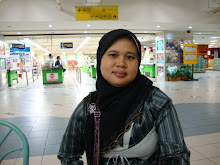The effectiveness of web navigation
Navigation is a key component of a website, relating directly to its success. Also known as a button bar, website navigation is the gateway into the different sections of content, and there are some general rules to follow to design it effectively.
1. Navigation Should Be Easy to Find (Very Easy)
Web users are impatient, and they're not going to hang around a site very long if they can't find their way around. Navigation should be a prominent element of your design. Since it will often take up much less space than other elements, it should stand out enough so it doesn’t get lost amongst a sea of content. The most common location of a button bar is across the top of the page, as users should not have to scroll down to navigate further into your site.
2. Keep it Consistent
Site navigation should appear in the same location on every page of a site. It should also maintain the same style, type and colors. This will enable users to get used to a site and feel comfortable browsing it. If navigation were to jump from the top to the left, disappear, or change colors from section to section, frustrated visitors are more likely to go elsewhere.
3. Use Obvious Section Names
The section names of a site, especially as labeled in the navigation, should clearly state what lies behind them. Obscure, general words like “resources” and “tools” should be avoided when possible, as they only lead to users clicking on multiple buttons before finding what they are looking for. Stick to obvious button names such as “news” and “podcasts” to avoid confusion.
4. Less is More
Too many navigation buttons, while leading into more sections, may just leave a user with too many choices. A long list of options keeps the visitor from getting into the most important content areas of your site. Instead, consider drop-down menus that break down top-level buttons into sub-sections. Also be careful about too many separate navigation bars. It is common to have up to three options for member-based content-driven sites (such as one main navigation, one for user accounts, and one at the bottom for legal disclaimers). However, if they aren’t clearly defined the user won’t know where to look, or click, and three separate choices is already pushing too many. For simpler sites, such as a portfolio, stick to one.
5. Remind the User Where They Are
Once a user clicks into a site section, it’s a good idea to remind them where they are. Use a consistent method to highlight the section a visitor is in, such as a change in color or appearance. If the site has more than one page per section, be sure to leave the button clickable so users can use it to get back to the main page of that area.
Navigation Design
Once you have an idea of the architecture and organization, you're ready to think about the design of the navigation. There are several things you should consider in deciding on your navigation design:
- Accessible
The navigation of your site is possibly the most important part of any given page. So it should be as accessible as you can make it. This means avoiding special effects like Flash, Java, or JavaScript as your only navigation method. - Meaningful
Keep your navigation meaningful. Make the links clear - don't try to get cute or use terms that are internal to your organization. Someone who has never been to your site before should know immediately where the link will take them. - Understandable
If you want to use images for your navigation, make sure that there is some text associated with them. " Mystery Meat Navigation" is the use of non-descriptive images as navigation, and it's much more common than you might think. - Prevalent
Your navigation should appear on every page of your site. While you don't need to have identical navigation, the basic structure should be the same throughout the site, with changes used only to indicate location within the hierarchy.
Once you've designed your navigation, then you can begin to use it. Keep in mind that it is really tempting to change your navigation structure while you're in the middle of implementing it. But if you decide to do this, be sure that you're making the change globally and that it fits with the original goals of your taxonomy and information architecture. My recommendation is to implement the original design and wait a week or two. If at that point you still want to change it, and the change will work, then go for it. You might just find that your planning and preparation were ultimately correct and not change it at all.
Example of navigation:







